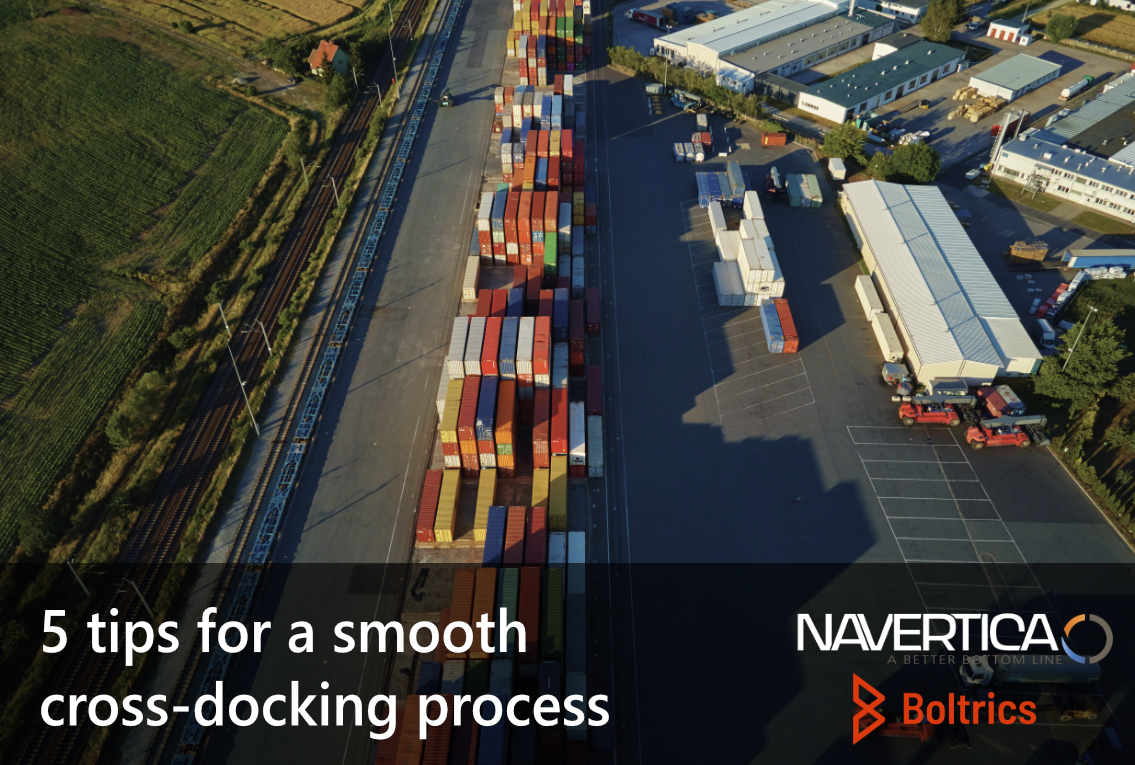“Has pallet A left for customer X?”, “Customer B claims to have received one pallet too little, where did it go?”, “We need to load one more pallet, where is it?”. Cross docking seems an everlasting battle between speed and traceability. How do you keep your head up in this overwhelming ocean of procedures?
Speed more important than overview and traceability
The process of cross docking mostly does not focus on which specific article is received. In the end, it doesn’t matter if article X or Y is on pallet A. What does matter is to know which pallet has been received, where it needs to be taken and when it needs to be loaded again. However, due to the speed and temporariness that goes with cross docking, there is often a lack of registration which causes a total lack of control in your warehouse activities.
Therefore, our consultant Jana have collected 5 tips from the field that help to extinguish the everlasting stress due to cross dock.

1. Identify every pallet when received
It may seem needless to say, but in practice, a lot of incoming pallets aren’t identified. This makes the rest of the process a lot more difficult because you will be missing out on the information which you’ll need in a later stadium. For example, during the loading, to see where the pallet needs to go or possible traceability. There is often a lot of unclarity about the destination of a pallet when it has been delivered.
2. Be sure not to forget the warehouse itself.
Although crossdock does not require actual storage, we advise to create enough space in the crossdock area and preferably divide this area to different destinations. To little space can difficult the logistic process, risking you lose track of which pallet is destined for which destination and where has it been stored. When the previous step has already been skipped, then this search will only get harder.
3. Scan and register every pallet movement.
No matter the short period a pallet is stored in your crossdock area, registering all movements helps to save all actions carefully. It could be as simple as just a scanning action. This is an easy step that makes a great impact on traceability. The manual search for past actions is also past time.
4. Invest in your process
As said, even though the crossdock pallets are not stored for a long time, it helps to look closer into this process as well. Think for example about hardware, the implementation of your software, your warehouse strategies, customer communication, etc. Investigating these different aspects of the process will reduce the haziness, the work pressure and the errors in the process.
5. Project from A to Z: communicate with your customer
In the first phase it seems irrelevant but involving your customers in the crossdock process is recommended. During implementation, we find a lot of logistics companies that put a lot of effort into finding the best work process. All this effort could be prevented when you and your customer work together in a certain way. For example, your customer could give the required information in an early stage of the process through E-mail or even EDI. A double win: you will be able to give a better service, you can process orders quickly and fewer errors will be made, while your customer’s confidence is growing because of your transparent communication.
More information about crossdocking?
Interested if our crossdocking solution fits your needs and wishes? Get in touch, we are glad to help.